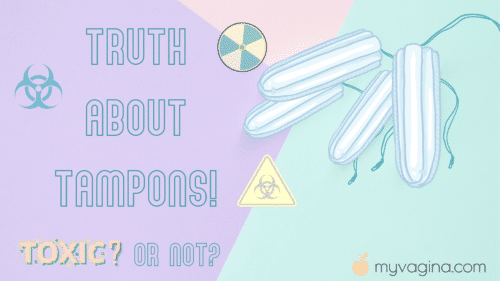Tampons are made out of cotton, or a cotton-rayon blend, and are used to absorb the flow of menstrual blood by being inserted into the vagina, right up near the cervix, where they sit without discomfort.
The tampon slowly (or if the flow is heavy, quickly) fills up with blood, and when the tampon is full or it has been in for up to eight hours, it is pulled out by the string and disposed of.
Tampons come in a number of sizes, with the most commonly available being mini, regular and super. These are FDA-regulated sizes and absorbencies, so one super size tampon is going to be more or less the same as another one.
Tampons can present some challenges when you are first learning how to insert them, but using tampons with applicators tends to alleviate this problem until you get a bit more practice in.
October 21, 2015
A 15-year-old is having trouble with tampons falling out. See how she can fix it.
September 15, 2015
Why can't a tampon just fall right out? We explain.
August 7, 2015
How to avoid grossing out the people you care about with your period.
July 8, 2015
A dry tampon pulled out has resulted in bleeding. Where is the blood coming from?
June 12, 2015
What do you do if seeing your period creeps you out?
June 11, 2015
Yanking out a tampon has caused urinary and vaginal pain at her next period. Why?
May 9, 2015
Tampon sex has its pros and cons.
Tampons are thought to be pretty safe to use.
From USD $130.00
This product has multiple variants. The options may be chosen on the product page
USD $149.00 Original price was: USD $149.00.USD $129.00Current price is: USD $129.00.
The most comprehensive vaginal microbiome test you can take at home, brought to you by world-leading vaginal microbiome scientists at Juno Bio.
Rated 4.88 out of 5
(8)
USD $9.95 Original price was: USD $9.95.USD $0.00Current price is: USD $0.00.
Unique, comprehensive BV, AV and 'mystery bad vag' treatment guide, one-of-a-kind system, with effective, innovative treatments.





